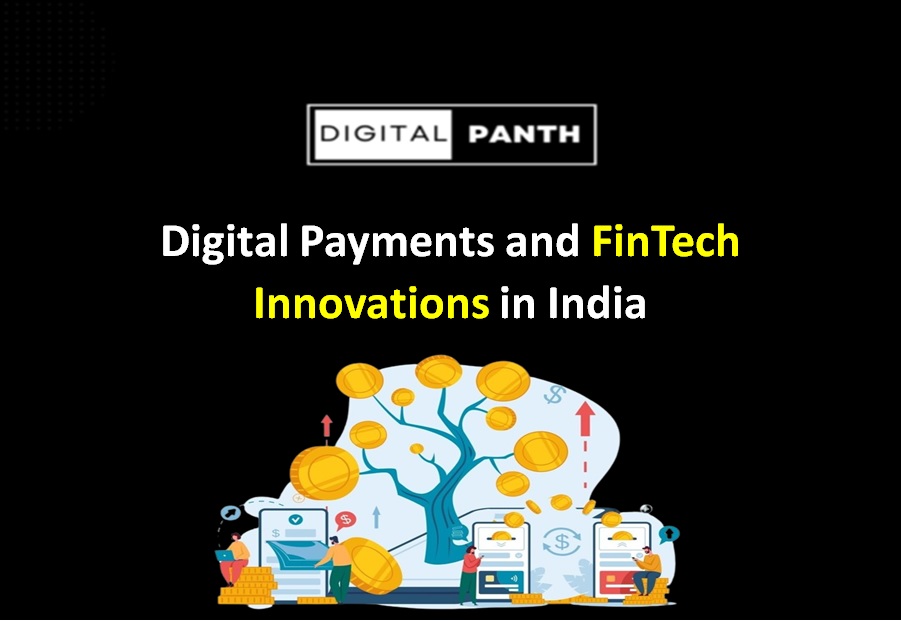Digital payments serve as a bridge for a variety of financial activities, catering to both consumers and corporations. The credit goes to technological instruments like our reliable computers, credit, debit, and prepaid cards, as well as our dependable mobile phones. These transactions entail transferring money from one digital source to another.
What is Digital Payment?
The concept of digital payment refers to doing financial transactions digitally without the need for actual currency. It’s similar to delivering money digitally from one location or person to another. It could entail using gadgets like laptops, cell phones, or even special electronic cards like debit, credit, or prepaid cards. Digital payments simplify money transactions for both individuals and companies, facilitating quick and easy online financial transactions and altering our perception of conventional financial transactions.
The Indian government has implemented a number of initiatives to support and encourage digital payments in India. The Government of India’s initiatives to establish a “digitally empowered,” “faceless, paperless, and cashless” economy as part of “Digital India.”.
Different Forms of Digital Payment.
Numerous choices are available for varying tastes in the broad realm of digital payments. UPI secures the top spot. It’s not the only one, but there are many others, like mobile wallets, AEPS, NEFT, and PoS terminals, all of which join the fray, each tailored to fulfil specific transaction needs.
- Payment Links: By enabling online payments without the use of a website or app, these links can be used conveniently after delivery. They guarantee immediate payments to simplify deals.
- Payment Links: By enabling online payments without the use of a website or app, these links can be used conveniently after delivery. They guarantee immediate payments to simplify deals.
- QR Codes: India’s digitisation has been revolutionised by QR code-based simple payment processes using cell phones and the internet.
- Credit Cards: With their combination of offers, security, and ease, credit cards are the best option. A variety of elements are included to redefine financial transactions.
- USSD: Transactions on mobile devices without apps or data are possible with *99#USSD. The initiative, supported by the National Payments Corporation of India (NPCI), provides banking services to underprivileged populations.
- Aadhar Enabled Payment System (AEPS): With its ability to verify Aadhar, AEPS transforms banking by enabling balance checks, withdrawals, deposits, and transfers.
- UPI (Unified Payments Interface) has replaced IFSC codes and traditional account numbers and enabled smooth money transactions utilising virtual accounts.
- Mobile Wallets: These innovative payment methods are safe and secure by keeping banking information confidential. They have made fund transfers, online shopping, and merchant payments easier.
- Bank Prepaid Cards: free from bank account connections, these provide a cash-loaded, multipurpose option to debit cards.
- Point-of-Sale (PoS) Terminals: Initially designed for in-store payments, PoS terminals have developed alongside digital platforms, increasing the range of transactions possible.
- Online Banking: This link to a range of financial services transcends temporal constraints. It offers unlimited access and is compatible with NEFT, IMPS, and RTGS.
- Mobile Banking: Smartphones have contributed to the growth of mobile banking, which increases convenience. It’s transforming frictionless transactions with UPI and digital payment apps.
- BHIM App: Quick transactions are made possible via the BHIM app using a VPA. Debit cards, bank accounts, and cell phone numbers become conduits for money.
Advantages of Digital Payments.
In India, digital payments are revolutionising the ever-changing financial transaction landscape with an array of advantages that redefine convenience, security, and financial literacy. In the direction of a better future, let’s examine the significant benefits propelling India to adopt digital payments.
- Quick and Easy Transactions: Transactions can occur instantly through digital payments, which eliminates time and location restrictions.
- Improved Security Measures: The core of digital payments is authentication and verification. Strong security measures protect transactions from possible fraud, such as cross-verification and one-time passwords (OTPs).
- Digital wallets empower people: As it is very convenient to make transactions, digital wallets are becoming more and more popular. Mobile wallets like PayTm, PhonePe, and Google Pay have emerged as a result of FinTech developments, enabling consumers to save their payment information on their cell phones safely.
- Rewards and More: Digital transactions offer benefits and cost savings in addition to the exchange of money. Every payment becomes an opportunity to gain from the digital payment in the form of cashback, incentives, prizes, and discounts that banks and digital wallets provide.
- Clear Financial Picture: With digital payments, keeping an eye on spending is very simple. A solitary dashboard with all transactions neatly arranged offers insightful information about weekly and monthly financial operations, providing financial consciousness as a central role.
- Revolutionising Tax Payments: Big data and digital payment systems bring about a revolution in tax payments. Companies that used to spend time and resources on manual processes can now settle their tax obligations online.
- Creating an Informed Economy: Digital payments boost the country’s economy as governments have become able to track cash movements with ease and make well-informed judgements. Moreover, lowering the price of production currency could encourage budgetary restraint.
What is FinTech?
Digitally enabled financial solutions that have ended conventional financial services are referred to as FinTech. Indian FinTech is at the forefront of financial inclusion, efficiency, and innovation throughout the ecosystem, from digital payments and lending apps to blockchain and AI-powered advising services. The digital financial landscape of India has changed significantly in recent years due to the country’s phenomenal growth in financial technology, or FinTech.
Reasons for the growing FinTech industry.
The fintech industry in India is expanding quickly, and this growth is anticipated to continue in the upcoming years. Numerous key drivers are driving the expansion of the Indian FinTech industry, such as:
- The expanding middle classes
- The government’s emphasis on financial inclusion,
- The growing acceptance of digital payments is driving this increase.
- Rising per capita income,
- Increased internet availability in rural India.
FinTech innovations.
With the innovative solutions of the FinTech industry, it has grown to be a significant force that is changing the country’s financial landscape. The following FinTech innovations are very useful for economic development:
- Blockchain: Blockchain is believed to be the safest technology available for database management. Every distinct change, data transfer, and attempt to modify data is documented as a single data entry in accordance with a set of rules. The technology ensures that all partners’ activities are transparent and that no data can be removed or changed.
- Decoding Wealth Management with Robo-Advisors: Robo-advisors have brought revolution by enabling universal access to wealth management. Robo-advisors help consumers achieve their financial objectives and risk tolerance by providing individualised investing advice by utilising AI and machine learning.
- Digital payment to empower the less-cash revolution: Due to their user-friendly and secure mobile payment applications, fintech companies have been instrumental in bringing about this paradigm change. The ubiquity of the Unified Payments Interface (UPI), along with the proliferation of mobile wallets and contactless payments, have enabled a cashless economy that benefits both customers and businesses.
- Financial inclusion: Providing banking and financial services to individuals is known as financial inclusion. With basic financial services available to everybody, regardless of income or savings, it seeks to integrate everyone into society. The goal is to help those who are economically disadvantaged by offering financial alternatives. Generally speaking, the phrase refers to giving the underprivileged access to low-cost, user-friendly savings and loan services.
- Insurtech: The insurance sector is undergoing a technological revolution with the rise of Insurtech, which is enhancing its responsiveness, intuitiveness, and ability to anticipate contemporary demands.
Role of FinTech Innovations in Digital Payment.
FinTech innovations played a key role in the expansion of digital payments. It affected digital payment so much that it has become a part of life. It is like a boon for digital-only banking, automation, blockchain, and improved delivery platforms, which have significantly improved financial services. FinTech innovations play a very significant role in digital payments.
- Digital payments, robo-advisors, blockchain, and other technical innovations are revolutionising the conventional financial landscape and creating previously unheard-of opportunities.
- The demonetisation in 2016 brought a revolution to the fintech industry. The overall volume of digital payment transactions surged dramatically in 2020, driven by the government’s revolutionary programmes like “Digital India” and momentous occurrences like the pandemic.
- Due to their user-friendly and secure mobile payment applications, FinTech companies have been instrumental in bringing about this paradigm shift.
- The ubiquity of the Unified Payments Interface (UPI), along with the proliferation of mobile wallets and contactless payments, have enabled a cashless economy that benefits both customers and businesses. India’s digital payment revolution has seen UPI emerge as its crown jewel.
- Both customers and business people benefit from its lightning-fast speed, user-friendliness, and cross-platform compatibility, which enable safe, instantaneous transactions and convenient, real-time payment settlement.
- Many innovations have significantly changed ecology as a whole. QR codes have made commercial payments easier, and with the use of video KYC, customers may now open bank accounts from the comfort of their own homes.
Also Read: How to Change the SBI Credit Card Billing Cycle?
Wrapping up.
Digital payments offer convenience, accessibility, and improved security. With only a few clicks, customers may transfer money, pay bills, and make purchases online using digital payment options. Makes transactions speedier and more convenient by eliminating the need to carry cash or write checks.

